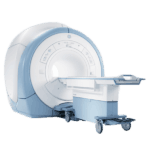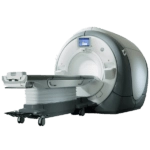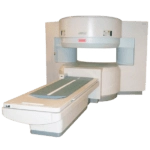The site plans should clearly indicate the location of the magnet isocenter and its surroundings to configure the workstation
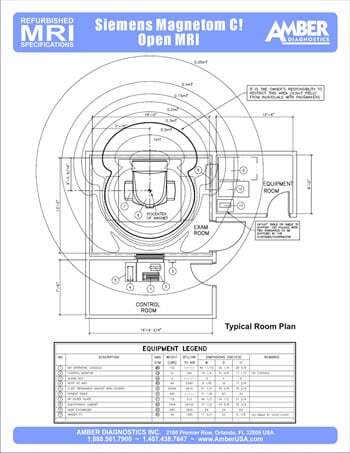
Site Layout for a Siemens Magnetom C! Open MRI. A thorough drawing and evaluation of the proposed MRI location, as well as communication with all that are involved (from planning to installation), should begin early in the process. The site plans should clearly indicate the location of the magnet isocenter and its surroundings to configure the workstation, RF coil storage cabinet, patient support, operator’s table, and more.
Front and side views of the magnet, including covers and patient table. (Click Image to Enlarge)
Specific ceiling heights are required for an open MRI, especially in the exam room (exam room suspended ceiling and exam room RF ceiling) and access route. As for flooring,
carpet is discouraged due to dust build up, risk of static shock, sanitary issues, and delivery hassles. Rather, go with a thin, vinyl tile floor for your new open MRI.
Siemens Magnetom C! Open MRI
- Exceptional image quality.
- Best SNR at 0.35 T
- Multi-channel application suite
- Broad range of sequences & techniques for all clinical applications
- Included in the standard package
- Outstanding syngo MR Applications
- syngo MR Neuro
- syngo MR Ortho
- syngo MR Vascular
- syngo MR Cardiac
- syngo MR Pediatric
- syngo MR Oncology
- syngo MR Body
Get Started
Request Pricing Today!
We’re here to help! Simply fill out the form to tell us a bit about your project. We’ll contact you to set up a conversation so we can discuss how we can best meet your needs. Thank you for considering us!
Great support & services
Save time and energy
Peace of mind
Risk reduction
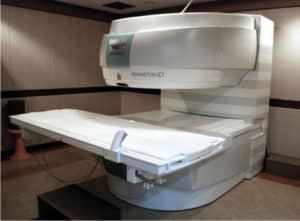
Technical data:
- Mass (weight) [kg]
- Magnet : 16000 kg
- Upper gradient & TX-coil : 79 kg
- Lower gradient & TX-coil : 79 kg
- Magnet covers, complete set : 150 kg
- Patient table : 200 kg
- Total weight : 16508 kg
NOTE: The magnet is positioned on rubber pads to prevent temperature loss to the floor and to reduce vibrations. In areas prone to earthquakes, the magnet has to be bolted to the floor. In this case, ensure that the Open MRI’s magnet is not inadvertently connected to the on-site ground.
Magnetic shielding. The magnet’s fringe field and ferromagnetic objects are of primary concern when selecting an Open MRI site. Fringe fields can be substantially decreased through the use of magnetic shielding; since fringe fields are 3-dimensional, areas on the floors above and below the imaging facility may also need shielding. Other ways to control fringe fields is securing the magnet area with locked entrances to keep out unauthorized personnel, and preventing inadvertent introduction of potentially hazardous metallic objects. Consequently, a detailed knowledge of a magnet’s fringe field and its relationship to surrounding equipment and activities is an essential part of site planning and installation. Caution should also be taken to protect the magnetic field as well. The presence of ferromagnetic material such as wheel chairs, AC chillers, vehicles, elevators, and electric railway systems can adversely affect the uniformity of the magnetic field. Protect the magnetic field from potential damage by knowing the location and amount of steel shielding, large objects and structures, external vibrations or shocks, and moving objects within the building.
Since MRI technology is especially complex and sensitive, it is best to let an MRI specialist install, fine-tune, and maintain the system. If you have questions or difficulty with your MRI project planning, don’t hesitate to contact us!

